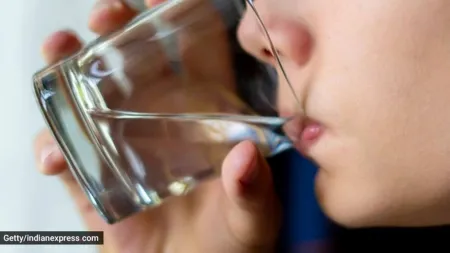Is this actually the world’s oldest curry?
Khane mein kya banayein? (What to make for dinner?) The question that plagues all adults every night — whether you’re a 20-something living alone in a matchbox apartment with four other flatmates or a parent-of-four with an army of rishtedaar to feed. After much debate and deliberation, you zero in on the baingan, and though it might not look like it, the purple lady seems to be everyone’s favourite. Now what if we told you this was still the scene some 4,000 years ago at a home in Farmana, a city of the Harappan civilisation?
We were shocked, too, when we saw Chef Kunal Kapoor’s video on the theme in which he informed that through a method called starch analysis, archaeologists identified the world’s first-known or oldest curry — baingan curry — made up of aubergine, ginger and turmeric from the shard of a bulbous handi (pot).

View this post on Instagram
A post shared by Kunal Kapur (@chefkunal)
The history of brinjal curry
According to Chef Vaibhav Bhargava, consultant chef & director of ABV Hospitalities Pvt. Ltd., in the past, Indian cuisine boasted simplicity, relying on the harmonious blend of fresh ingredients and traditional spices. Historical accounts suggest that early curries, such as the brinjal and mango curry, epitomised this straightforward approach. However, over time, culinary customs evolved, diversifying across regions. The modern culinary landscape showcases a kaleidoscope of flavours and techniques. In the South, a plethora of brinjal dishes, each with its distinct flavour profile, has emerged. Meanwhile, in the North, variations abound, from rich onion-tomato gravies to stuffed brinjals infused with an array of spices.
“Contemporary cuisine embraces innovation, with freshly ground spices and unconventional ingredients like yoghurt or coconut milk taking centre stage. In Kolkata, yoghurt lends a creamy texture to brinjal curries, while in Southern regions, coconut milk transforms stuffed aubergines into a luscious delicacy. Although archaeological findings hint at the antiquity of brinjal curry, its status as the oldest curry remains uncertain,” Bhargava explained in an interaction with indianexpress.com.
Acc0rding to culinary chef and food historian Rakesh Raghunathan, the status of brinjal curry as the “oldest” is dubious. “Brinjal has been around for a long time, but to say if it was eaten as a curry in its oldest forms is difficult. What comprises a curry is vast, especially in a country like India’s,” he explained.
Sangeeta Khanna, a nutrition and culinary consultant, agreed, adding that these differences in curry and the way brinjal is eaten arise from the different varieties of the vegetable found in these areas of the country. For instance, she mentions the example of Ramnagar’s specific variety of brinjal, which is large, “almost the size of a watermelon”, buttery when roasted, and is used to make what is called “baingan ka chokha.” (Remember Jackie Shroff makes it too?)
Raghunathan pointed to the prasadam at Thillai Nataraja Temple in Chidambaram, Tamil Nadu, which is essentially a brinjal curry called “Chidambaram Kathrikai Gothsu”. “Eggplant is sauted in oil, and made into a pulp, which is then cooked with tamarind juice and finished with a spice powder and tempered,” he explained.
Historically, brinjal and its relatives were among the few edible members of the Solanaceae family, which was largely considered toxic. The vegetable and its many cousins have been domesticated and utilised for food, with some even being dehydrated for year-round consumption, indicating their importance as staple vegetables, Khanna noted.
 Contemporary cuisine embraces innovation, with freshly ground spices and unconventional ingredients like yoghurt or coconut milk taking centre stage. (file)
Contemporary cuisine embraces innovation, with freshly ground spices and unconventional ingredients like yoghurt or coconut milk taking centre stage. (file)
Additionally, Khanna discussed how the texture and characteristics of different varieties influence their use in specific recipes. “Some varieties are suitable for stuffing and frying, while others are better suited for mashing into gravies.” She notes that the choice of brinjal variety significantly impacts the flavour and texture of the final dish.
Here’s a version of the “oldest” Brinjal curry provided by Chef Vicky Ratnani, chief culinary officer and co-founder at Ghost Kitchens.
- Wet grind the ginger, turmeric and cumin seeds.
- Heat sesame oil in the pot, add the paste and cook for few minutes.
- Add brinjals along with some salt and give it a stir.
- Cover with a lid and cook until the brinjals are nearly cooked (if needed, some water could be added).
- Now, add the mango and dehydrated cane juice. Simmer for a few minutes or until the mango is cooked.
- Taste and adjust the seasoning.
- Serve with bajra roti.
Disclaimer: The copyright of this article belongs to the original author. Reposting this article is solely for the purpose of information dissemination and does not constitute any investment advice. If there is any infringement, please contact us immediately. We will make corrections or deletions as necessary. Thank you.





